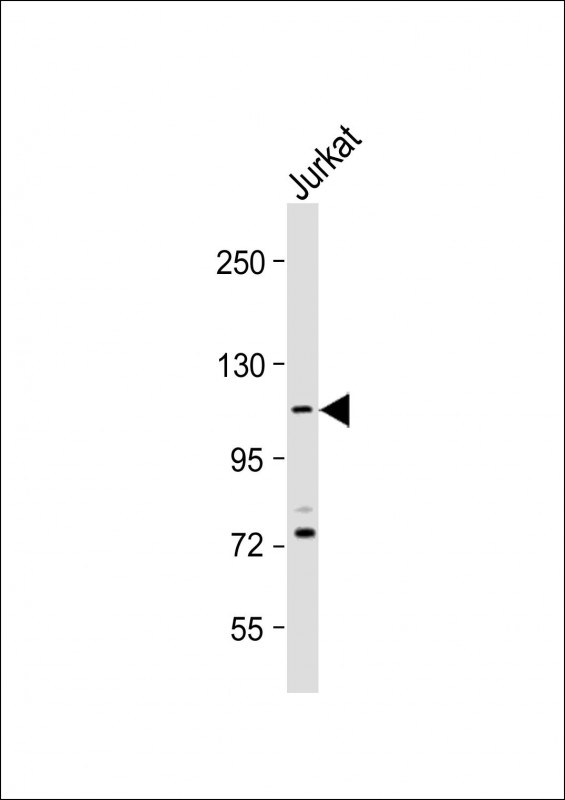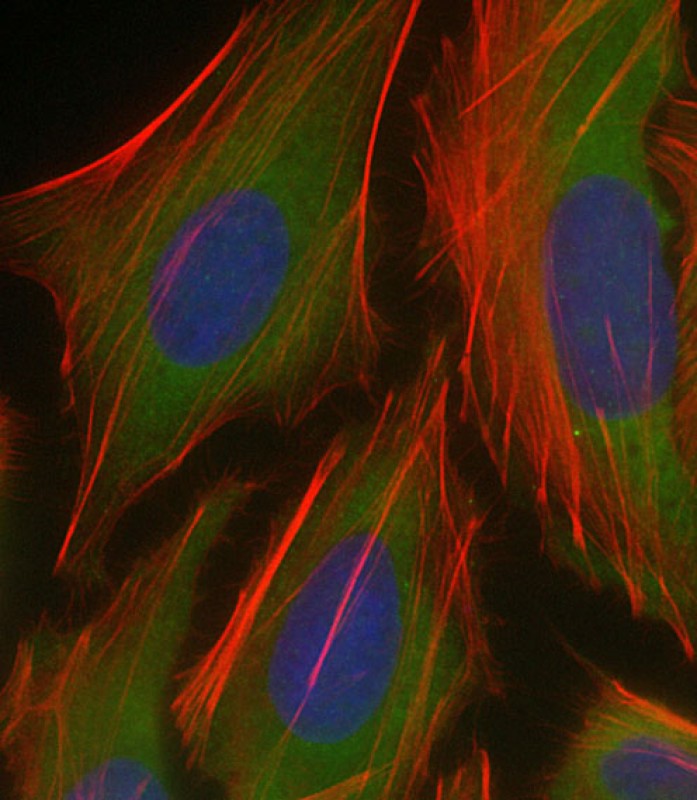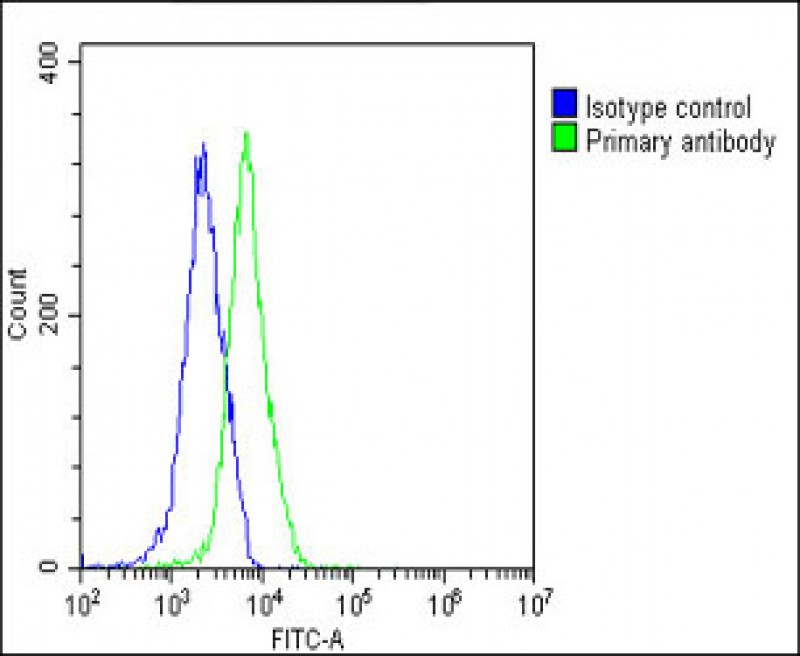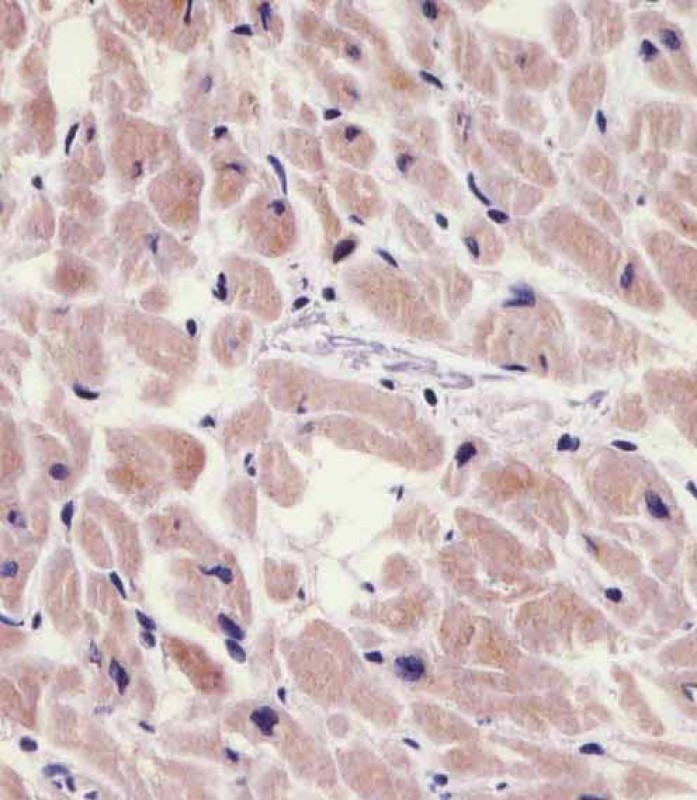



| WB | 1/2000 | Human,Mouse,Rat |
| IF | 咨询技术 | Human,Mouse,Rat |
| IHC | 1/100-1/500 | Human,Mouse,Rat |
| ICC | 1/25 | Human,Mouse,Rat |
| FCM | 1/25 | Human,Mouse,Rat |
| Elisa | 咨询技术 | Human,Mouse,Rat |
| Aliases | Serine/threonine-protein kinase N1, 2.7.11.13, Protease-activated kinase 1, PAK-1, Protein kinase C-like 1, Protein kinase C-like PKN, Protein kinase PKN-alpha, Protein-kinase C-related kinase 1, Serine-threonine protein kinase N, PKN1, PAK1, PKN, PRK1, PRKCL1 |
| Entrez GeneID | 5585 |
| WB Predicted band size | 103.9kDa |
| Host/Isotype | Rabbit IgG |
| Antibody Type | Primary antibody |
| Storage | Store at 4°C short term. Aliquot and store at -20°C long term. Avoid freeze/thaw cycles. |
| Species Reactivity | Human, Mouse, Rat |
| Immunogen | This PKN1 antibody is generated from a rabbit immunized with a KLH conjugated synthetic peptide between 836-870 amino acids from human PKN1. |
+ +
以下是关于PKN1抗体的参考文献示例(注:以下内容为示例性概括,非真实文献):
1. **文献名称**:*"PKN1 modulates TGF-β signaling and tumor progression via antibody-based detection in colorectal cancer"*
**作者**:Lee, H. et al.
**摘要**:通过PKN1抗体进行免疫组化分析,研究发现PKN1在结直肠癌组织中高表达,并揭示其通过调控TGF-β通路促进肿瘤侵袭转移的机制。
2. **文献名称**:*"Development of a high-affinity anti-PKN1 antibody for functional studies in cardiomyocyte hypertrophy"*
**作者**:Martinez, R. et al.
**摘要**:本研究报道了一种新型PKN1单克隆抗体的开发,验证其在心肌细胞肥大模型中的特异性,并证明抑制PKN1可减轻病理性心脏重塑。
3. **文献名称**:*"PKN1-antibody complex structure reveals kinase activation mechanisms"*
**作者**:Kato, S. et al.
**摘要**:通过X射线晶体学解析PKN1与其抗体的复合物结构,阐明了PKN1激酶活性调控的分子基础,为靶向药物设计提供依据。
4. **文献名称**:*"PKN1 antibody-based screening identifies its role in macrophage polarization and inflammation"*
**作者**:Chen, L. et al.
**摘要**:利用PKN1抗体进行流式细胞术和Western blot分析,发现PKN1通过调控NF-κB通路影响巨噬细胞极化,参与炎症性疾病进程。
(提示:如需真实文献,建议通过PubMed或Google Scholar搜索关键词“PKN1 antibody”或“PKN1 kinase function”获取最新研究。)
The PKN1 (Protein Kinase N1) antibody is a crucial tool in studying the function and regulation of PKN1. a serine/threonine kinase belonging to the AGC kinase family. PKN1. also known as PRK1 or PKNα, plays diverse roles in cellular processes, including cytoskeletal reorganization, cell migration, apoptosis, and vesicle trafficking. It contains an N-terminal regulatory domain with three hydrophobic motifs and a C-terminal catalytic kinase domain. PKN1 is activated by Rho GTPases (e.g., RhoA, Rac1) through direct interaction, linking it to signaling pathways that regulate cell polarity, mechanotransduction, and stress responses. Dysregulation of PKN1 has been implicated in cancer progression, neurodegenerative diseases, and cardiovascular disorders, making it a potential therapeutic target.
PKN1 antibodies are widely used in Western blotting, immunofluorescence, immunohistochemistry, and co-immunoprecipitation to detect PKN1 expression, localization, and interaction partners. Specific monoclonal or polyclonal antibodies target distinct epitopes, enabling the study of post-translational modifications (e.g., phosphorylation) or conformational changes. Validated antibodies help elucidate PKN1's role in disease models, such as its pro-survival function in tumors or its involvement in amyloid-beta toxicity in Alzheimer’s disease. Researchers also utilize PKN1 antibodies to assess kinase activity inhibition in drug discovery. Cross-reactivity with homologous kinases (e.g., PKN2/3) requires careful antibody validation via knockout controls or siRNA knockdown to ensure specificity.
×